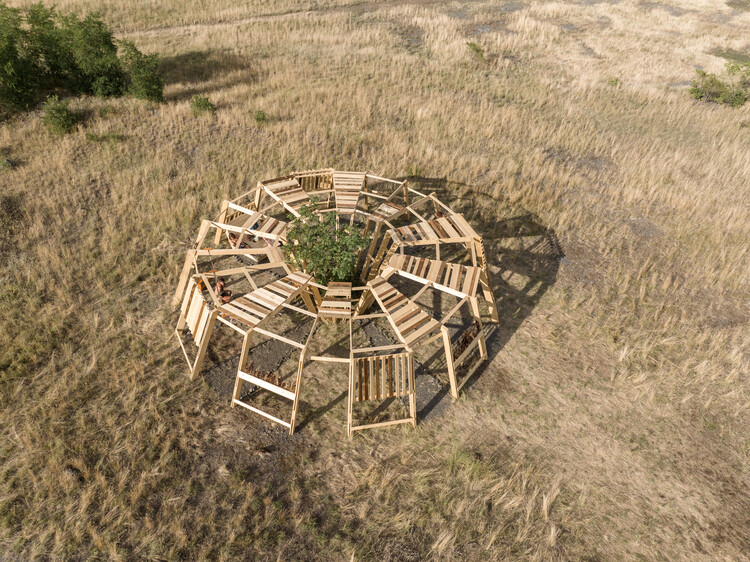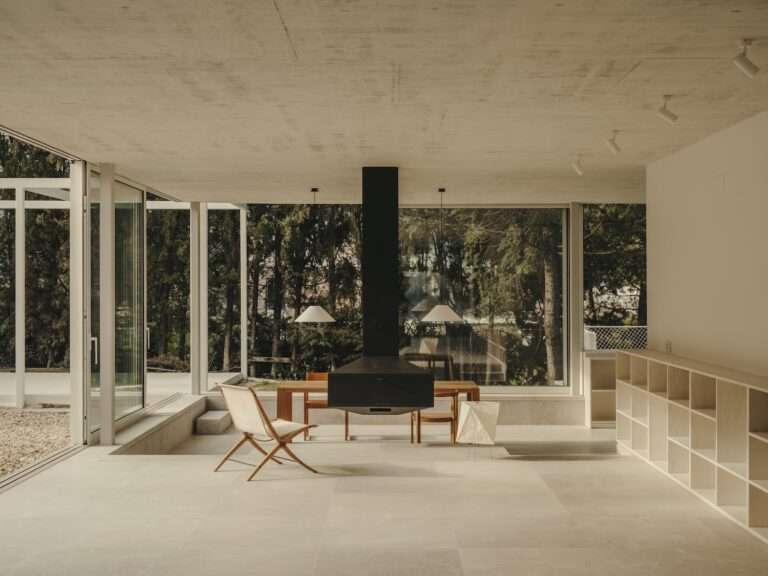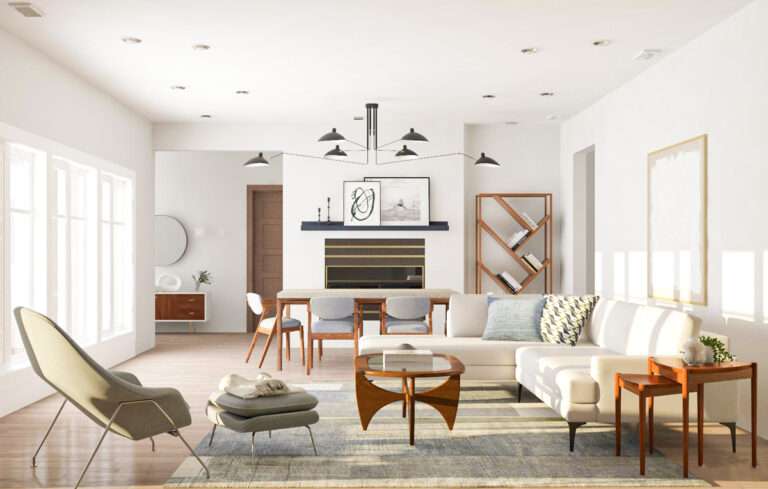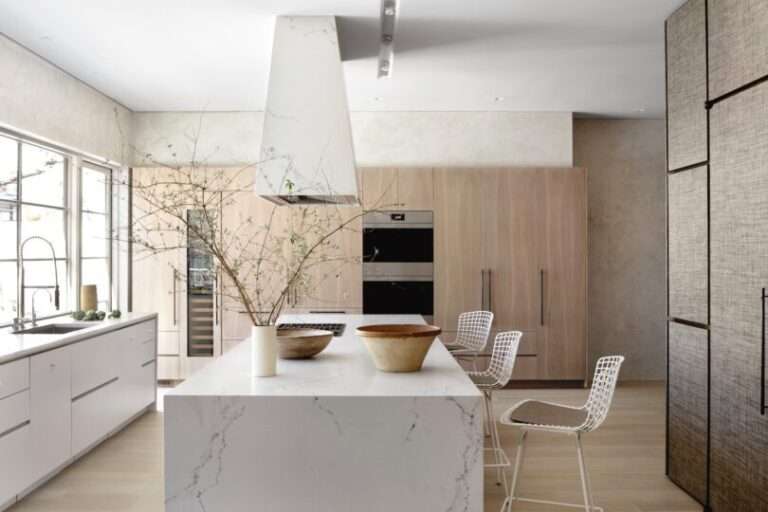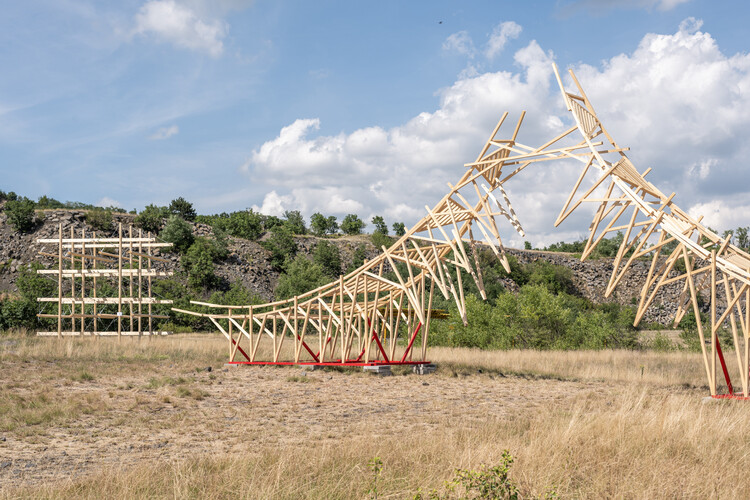
After a three-year break, Hello Wood’s builder festival returns to welcome students, architects, and young professionals from all across the world to join the 10-day builder camp to test their wooden construction abilities, learn to collaborate, and participate actively in on-site design and construction. For the first time in Hello Wood’s 13-year history, this year’s workshop takes place at a new location, in the crater of an abandoned basalt quarry on Haláp Mountain in Hungary. The workshop also aligns with and supports Veszprém’s title of 2023 European Capital of Culture, which also includes over a hundred other villages and towns across the Bakony-Balaton region. The event took place between July 6 and 15, ending in a two-day music festival open to all.
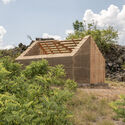
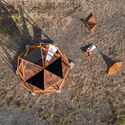
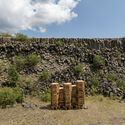
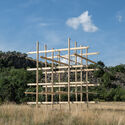

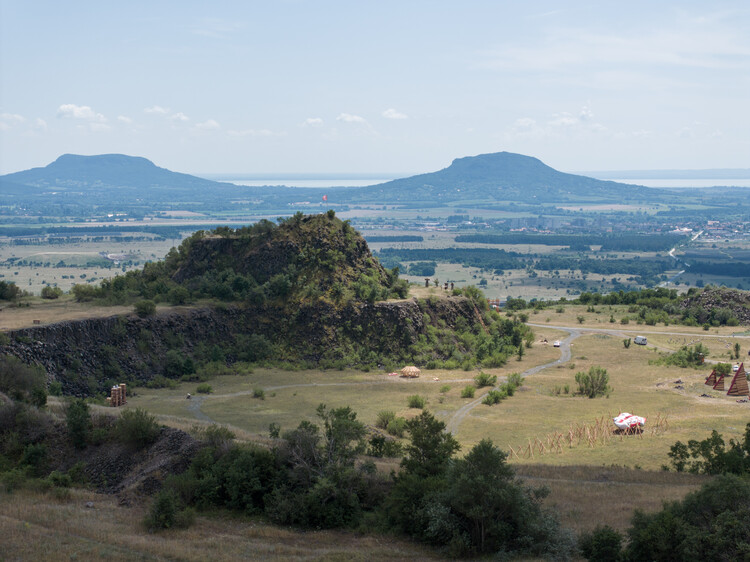
Reflecting its unique location, the overarching theme of the workshop is focused on the balance between building and demolition, as the wounded landscape demonstrates how the extraction of building materials inevitably leads to the demolition of natural structures. By highlighting this ecological condition, the event also aims to raise awareness of this location, defined by the naturally occurring hexagonal basalt columns and expansive views of Lake Balaton and its surrounding mountain range. To activate this space, the Hello Wood team also built their own pavilion prior to welcoming the workshop participants. Resembling a campfire, the triangular-shaped structures are built with reclaimed wooden beams recuperated from the site of the Ballet Institute of Budapest.
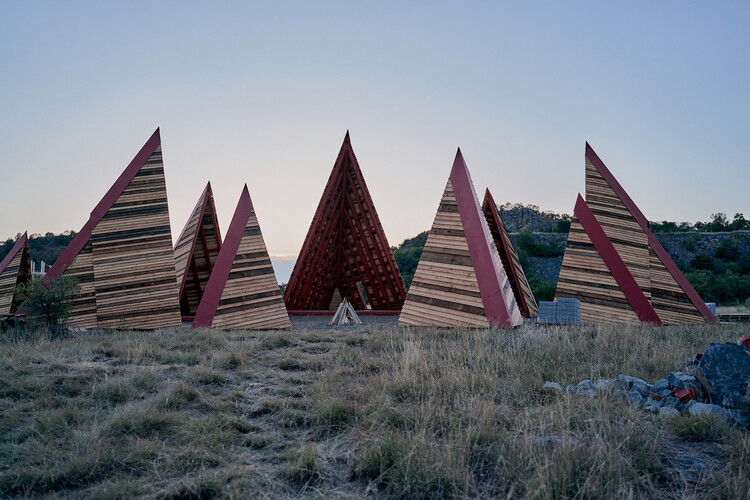
Beyond the theme, the workshop is an opportunity for students to test out their accumulated architectural knowledge in a practical manner. The workshop is based on Hello Wood’s Builder Method, an alternative educational methodology. Through the process of building structures with their own hands, the participants gain a different type of knowledge while also building a community and developing their confidence and understanding of construction processes. Prior to the opening of the festival, team leaders have been selected based on the creativity and viability of their proposed designs. A call for participants then gathers students and architects to join each team. During the first seven days of the festival, they build the proposed structures coordinated on-site by the team leaders and under the guidance of Hello Wood’s crew. The resulting pavilions and installations demonstrate design thinking rooted in processes and experimentation.
Read on to discover the structures built during Hello Wood’s 2023 Builder Summit and the techniques and methodologies that enabled their realization.
At the Intersection of Physical and Digital
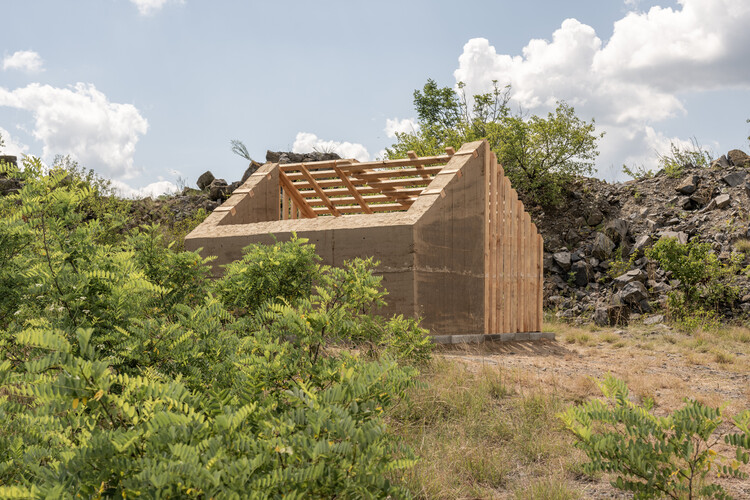
While the Builder Methodology refers to a process of “thinking through making,” this does not exclude the use of digital tools, as demonstrated through several projects developed during this year’s edition. One such example is the Half a House project, built by the team led by Neal Lucas Hitch. In this case, one-half of the installation consists of a rammed earth structure resembling the typical shape of a house. The rammed earth technique was a completely new building process for the majority of the team members, requiring on-site experimentation and manual labor.
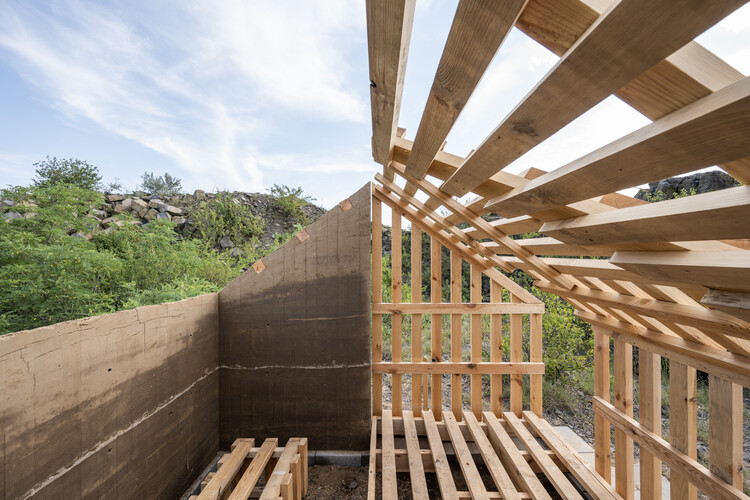
However, the wooden formwork needed for the construction of the earth walls went through a digital design process in order to allow the panels to be repurposed to create the mirrored other half of the house. To achieve this deceivingly simple-looking structure, digital fabrication and parametric design tools were used to control the shape of the puzzle-like panels to fit both stages: as the framework for the rammed earth and as a coherent structure completing the image of the house, thus minimizing material waste throughout the building process.
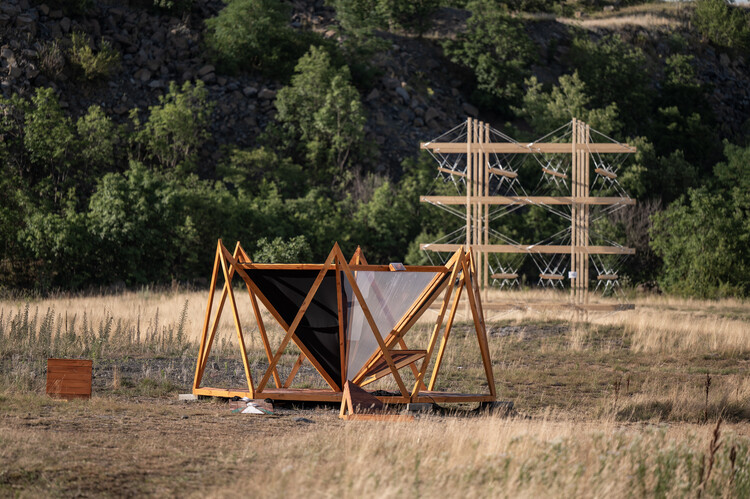
A different approach to digital integration can be seen in the Beacon project, designed by Botond K. Gazda and Max Komorek. In order to create an intuitive gathering space for the festival goers, the design uses a projector together with reflective and transparent screens to create a holographic animation appearing to float in the center of the pavilion.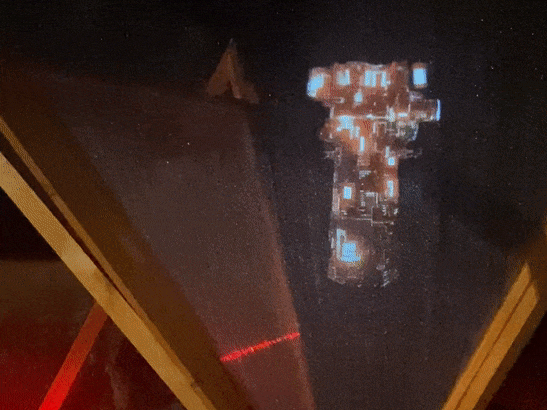
Iterative Structures

While all the projects went through an initial planning process, a number of the structures presented during this year’s edition exemplified and required an iterative process, where solutions change and adapt to unexpected factors. One such design is the Torii project, build by a team led by Darin Emilov Grozdev and Magdalena Pfeiffer. Resembling a traditional Japanese gate commonly build at the entrance of a Shinto shrine to signify a change of status from the mundane to something beyond, the slim structure suffered a number of adaptations during its construction process, including spontaneous decisions on the final shape and changes to the thickness of the elements resulting from physical tests.
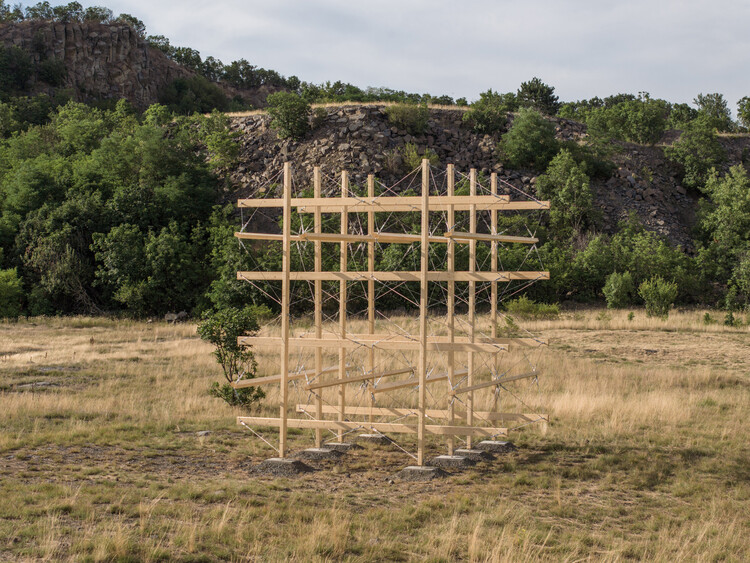
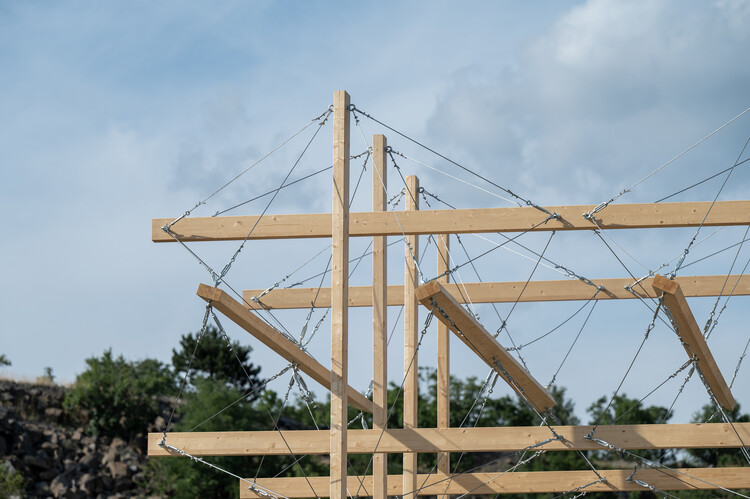
A particular planning and building process was needed to create the ‘X Space’ project led by Matteo Fontana and Mattia Mattiuzzi. Its complex structural system demonstrated both the need for careful preparation before construction and calibration during the building process. The structure is based on tensegrity structural principles, using isolated components under compression made from 6-meter-long beams and a network of tensed elements, the steel cables. Given that all the elements depend on one another in order for the system to work, it asked students to think about how to build and calibrate a structure that cannot stand unless completed. In doing so, the builders also had to learn firsthand about the weight and resistance of materials in order to create a system that takes as much space as possible with the minimum amount of materials.
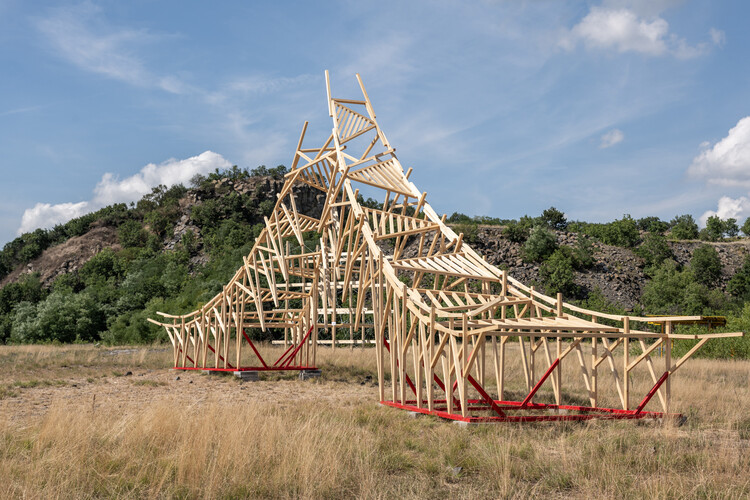
The project titled Diszkóhernyók, translated to Dancing Caterpillars, designed by Klósz Endre, Kovács Lóránt, and Sarkadi Zsolt, is another example of the iterative process. Initially envisioned as a volcano-like gate, the structure needed for the design slowly shaped the image into that of multi-legged creatures leaning on one another, an image further reinforced throughout the rest of the design process. Dorottya Kiss and Seth Martosh’s Spaceship was also an experiment in difficult structures needed to keep the spaceship off the ground and into a higher meditative state, encouraging its cadets to contemplate their home planet and their relationship to it.
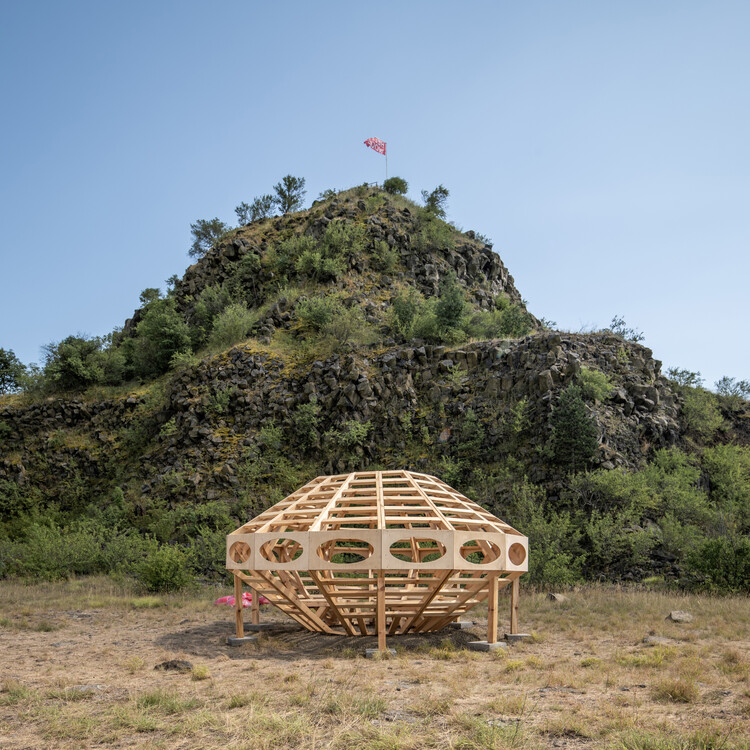
Working with the Elements

Several of the structures involved the use of unusual elements, like fire or air, while also creating responses to their natural surrounding environment. The Lava Cloud project, led by Pablo Kobayashi and Lucía Aumann, experimented with physical phenomena by adapting the inflatable element to recreate a liquid state. The wooden tripods guide the “lava cloud” to a shaded meeting space but also allow the fluid element to adapt and react to the wind and people.

At the other end of the spectrum, the ‘Tra project by Pintér Márton, Eke Dániel, Kelszár Ferenc and Rózner György experimented with building and destruction by setting their structure on fire. The 18-meter tall stair-like structure was created to be set on fire in a controlled manner with the help of the local fire brigade. The blaze is meant to alter the appearance of the installation, while the quick intervention still allows for the structure to exist after the event.
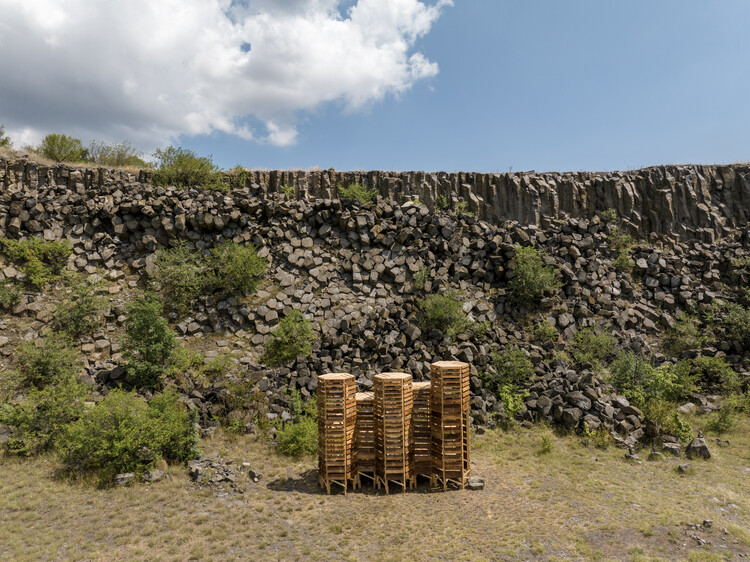
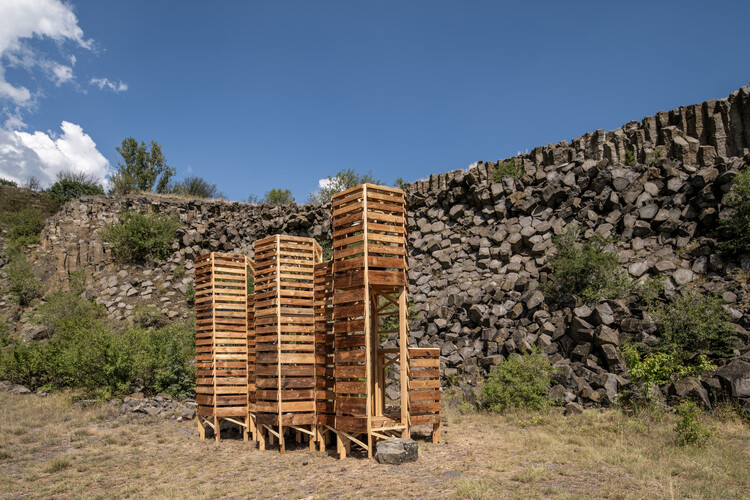
The Kőmozi, translated to rock cinema, is a direct response to the spectacle of the abandoned quarry. Designed by a team led by Anton Schwingen, Matthew King, Mylan Thuroczy, and Vilius Petraitis, the installation takes advantage of the theatrical quality of the rockface with its hexagonal basalt columns. The installation also uses the reclaimed wood brought from the Ballet Institute of Budapest as its cladding. On a similar note, Treeroots, built by the team led by Rafael Ribeiro Silveira and Ali Sarmad Khan, is centered around a tree to create a calm space for relaxation, play, and green therapy. The pavilion also frames selected views of the surrounding landscape of the basalt crater. The radial configuration allows the structure to adapt to uneven terrain.
